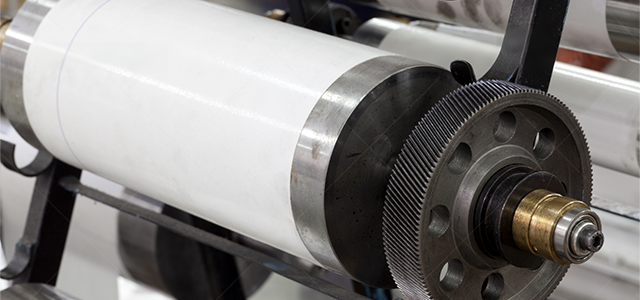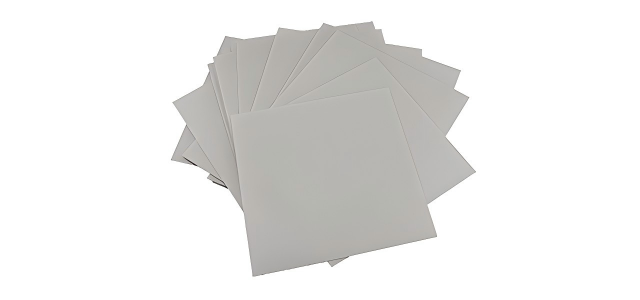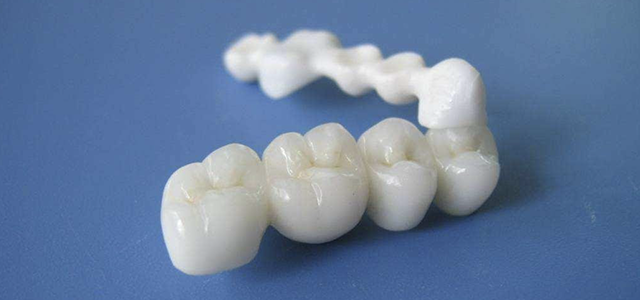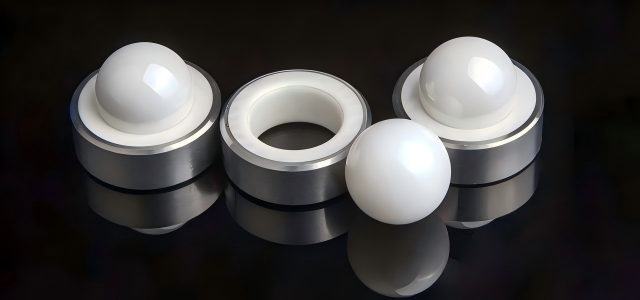Introduction
Under extreme conditions of high temperature, wear, and corrosion, metals soften and plastics deform—the failure of traditional materials directly leads to equipment downtime and soaring costs. To address these challenges, you need advanced ceramic solutions. This is not simply a material replacement, but a systemic upgrade targeting performance bottlenecks. This article will take you deeper into the key areas where traditional materials are failing, and how advanced ceramic solutions, with their superior performance, can be the key to breaking through these limitations.
How Advanced Ceramics Overcome Material Limits
In the world of engineering design, metals and plastics were once indispensable cornerstones. However, when pushed to extreme conditions like high temperatures, abrasion, and corrosion, the inherent limitations of these traditional materials become critical weaknesses threatening system reliability. Recognizing the problem is only the beginning; finding the solution is what truly matters. So, is there a material that can “address the root cause” and specifically tackle these challenging issues? This chapter will reveal that advanced ceramics are precisely such an “all-around expert”. Rather than merely refining traditional materials, they offer precise solutions to each of these pain points through their unique performance advantages.
Temperature Limit
Scenario: In engine combustion chambers, high-temperature heat treatment furnaces, or semiconductor diffusion processes, the temperature resistance of materials directly determines the power and lifespan of the equipment.
Pain point: The strength of steel drops sharply above 500℃. Most engineering plastics begin to soften or decompose above 150℃.
Solutions: Unlike metals, which soften and creep at high temperatures, certain types of advanced ceramics (such as alumina and silicon carbide) can maintain their shape, strength, and chemical stability at temperatures far exceeding the limits of metals.
Wear limit
Scenario: Conveying systems in mining machinery, guiding mechanisms in automated production lines, and mortar pumps in chemical processes—wear is the primary cause of precision loss and frequent downtime.
Pain point: Even quenched steel undergoes visible wear at a rapid pace under continuous friction and particle erosion, leading to diminished equipment precision and shortened service life.
Solutions: Advanced ceramics have a hardness several times that of quenched steel, approaching that of diamond. When faced with friction, abrasive wear, and fretting wear, ceramic components achieve a service life tens of times longer than metals with a negligible wear rate.
Chemical Corrosion Limit
Scenario: Rollers on electroplating production lines, agitators in chemical reactors, equipment on offshore platforms—the destructive force of corrosion is everywhere.
Pain point: Acidic, alkaline, and salt spray environments rapidly erode metal surfaces, leading to equipment leaks, product contamination, and even safety incidents.
Solutions: Advanced ceramics have extremely high chemical inertness and excellent resistance to most strong acids, strong alkalis, molten metals and organic solvents, thus fundamentally eliminating corrosion and pollution.
Electrical Performance Limit
Scenario: Insulating substrates for high-frequency communication chips, insulators for high-voltage transmission systems, and heat-dissipating substrates for high-power IGBT modules all demand materials that achieve a perfect balance of electrical, thermal, and mechanical properties.
Pain point: The conductivity of metals becomes a critical flaw in high-voltage insulation and high-frequency signal transmission applications. Meanwhile, the insulating properties of plastics are often accompanied by poor heat dissipation and low strength.
Solutions: Advanced ceramics serve as ideal high-insulators. Furthermore, certain ceramics (such as aluminum nitride) also exhibit exceptional thermal conductivity. This perfectly resolves the dilemma of “insulation without thermal conductivity,” meeting the stringent demands of high-voltage insulation and high-frequency signal transmission.
Biocompatibility Limit
Scenario: In medical fields such as dental implants and artificial joints, the biocompatibility and long-term safety of materials are absolute prerequisites.
Pain point: Ions such as Ni and Cr in certain metal alloys may leach out within the human body, triggering allergic reactions or rejection responses.
Solutions: Zirconia ceramics, for instance, not only eliminate the risk of metal ion leaching but also exhibit exceptional biocompatibility. They cause no irritation or allergic reactions to human tissues and achieve excellent integration with bone tissue, making them an ideal choice for implant materials.

As you can see, it is precisely these performance breakthroughs that make advanced ceramics the solution when traditional materials fail. The superior properties of advanced ceramics become immediately apparent when compared to metals and plastics, as shown in the table below.
|
Advanced Ceramics vs. Metals vs. Plastics: Core Performance Comparison |
||||
| Performance Indicators | Advanced Ceramics | Metals | Engineering Plastics | Explanation and Impact |
| Max. Operating Temperature | Very high | Medium | Low | Advanced ceramics maintain their shape and strength at high temperatures, while metals soften and plastics melt. |
| Hardness | Extremely high | High | Low | Advanced ceramics have a hardness close to that of diamond, and their wear resistance is several to dozens of times that of steel. |
| Wear Resistance | Excellent | Good | Poor | In abrasive environments, ceramic components have a lifespan far exceeding that of metals, significantly reducing downtime. |
| Chemical Corrosion Resistance | Excellent | Poor to Good | Good to Excellent | Advanced ceramics are inert to most acids and alkalis, while metals are easily corroded. |
| Density | Medium | High | Low | Advanced ceramics have a lower density than steel, which helps to achieve lightweighting. |
| Electrical Insulation | Excellent insulator | Conductor | Excellent insulator | Advanced ceramics are ideal insulating materials, and some also possess high thermal conductivity (such as aluminum nitride). |
After learning about these features, are you wondering: How can this be applied to my industry? The answer lies below.
Advanced Ceramic Solutions: Application of Five Major Industries
We’ve selected five specific industrial scenarios. Let’s see how advanced ceramic solutions become engineers’ secret weapon for overcoming challenges.
Industrial Automation and Wear-Resistant Components
Pain point: On automated production lines, key components such as conveyor guide rollers, robotic gripper claws, and bearings are subject to continuous friction and vibration. This causes metal parts to wear down, leading to reduced positioning accuracy and product scratches. As a result, downtime for replacement occurs on average every 3-6 months, severely restricting the overall efficiency of the equipment.
Advanced ceramic solutions: Using high-purity alumina with a purity of 99% or higher, or yttria-stabilized zirconia ceramics to make critical wear-resistant components. This extends component lifespan from months to years, significantly reducing downtime and maintenance, and lowering overall costs.

Semiconductor Manufacturing
Pain point: During wafer transfer, any micron-sized wear particles or metal ion contamination can cause a sharp drop in chip yield.
Advanced ceramic solutions: High-purity alumina with a purity of 99.5% or higher is widely used in cost-sensitive insulating fixtures and chamber liners due to its high insulation, corrosion resistance, hardness, and reliable resistance to plasma erosion. Likewise, aluminum nitride, with its superior thermal conductivity, exceptional resistance to plasma corrosion, and thermal expansion coefficient matching that of silicon, is the ideal choice for RF components, etching chambers, and chip heat dissipation substrates.

Medical Technology and Life Sciences
Pain point: Metal implants such as Co-Cr alloys may release metal ions due to abrasion after long-term use in the human body, potentially triggering inflammation or allergic reactions (metal-related diseases). Additionally, the mismatch between the elastic modulus of metals and that of bone may cause a “stress shielding” effect, which is detrimental to long-term bone health.
Advanced ceramic solutions: Medical-grade zirconia ceramics have become the preferred choice for dental restorations and joint implants due to their diamond-like wear resistance, excellent fracture toughness, and superb biocompatibility.

Automobiles and New Energy
Pain point: New energy vehicle battery packs demand extremely high standards for insulation and heat dissipation. However, traditional plastics cannot simultaneously achieve high strength and dimensional stability at elevated temperatures. Furthermore, the turbo lag phenomenon in gasoline vehicles is partly due to the heavy weight and high inertia of traditional metal rotors.
Advanced ceramic solutions: Silicon nitride ceramic insulating rings are used for battery module connections. Its unique combination of high insulation, high thermal conductivity, and high strength solves the high-voltage insulation safety risks and heat dissipation challenges in battery packs. Its high strength ensures long-term reliability under vibration, guaranteeing the safety and long lifespan of the battery system.
Similarly, silicon carbide ceramic matrix composites are used in turbocharger rotors, perfectly resolving the turbo lag problem. Because silicon carbide has a much lower density than metals, it has less inertia and accelerates faster. Furthermore, its high-temperature resistance far exceeds that of superalloys, meeting the higher exhaust temperature requirements of next-generation high-efficiency engines.

Petrochemicals and Extreme Environments
Pain point: In scenarios such as deep well drilling and the transportation of highly corrosive media, metal valve seats and sealing rings rapidly fail under the combined stresses of high pressure, high abrasion, and chemical corrosion. This leads to internal valve leakage and media leakage, resulting in significant safety risks and substantial economic losses.
Advanced ceramic solutions: Yttria-stabilized zirconia ceramics offer unparalleled comprehensive properties, particularly their high toughness, ensuring safety and reliability under high pressure and impact. This makes them the most robust and effective advanced ceramic solution for addressing this complex failure challenge.
Furthermore, when operating conditions have extreme requirements for wear resistance and thermal conductivity, and it is confirmed that the pressure is stable and the impact load is controllable, we can also choose reaction bonded silicon carbide (RBSiC). Although silicon carbide is more expensive, its superior wear resistance and thermal shock resistance are irreplaceable in specific operating conditions characterized by severe wear and corrosion, accompanied by intense thermal shock (such as frequent switching of high-temperature media). In such cases, the premium paid is for its “ceiling-level” performance in specific areas.

How to Customize Your Advanced Ceramic Solutions
Through the above scenario, you can see that a successful advanced ceramic solution comes from a deep understanding of specific operating conditions and precise material matching.
The core of customization lies in precisely defining your needs, including: mechanical load, wear type, operating temperature, chemical environment, and precision requirements. Based on these parameters, we can find the optimal balance between performance and cost among many options such as alumina, zirconia, and silicon carbide. This balance is achieved through professional structural design, precision manufacturing, and rigorous quality control.
Conclusion
When metals soften, plastics deform, and corrosion spreads—the failure of traditional materials should not be the end of technological progress, but rather the starting point for seeking better solutions. Advanced ceramic solutions were developed to meet these extreme challenges. Is your equipment also facing material limitations? Contact our experts for free initial technical consultation and customized solutions.
FAQs
Q1: What is advanced ceramics? How does it differ from ordinary ceramics?
A: Advanced ceramics, also known as special ceramics, fine ceramics, high-performance ceramics, and high-tech ceramics, are characterized by their ability to overcome the performance limitations of traditional ceramics through “artificially designed raw material composition + precise manufacturing process,” thereby possessing excellent mechanical, acoustic, optical, thermal, electrical, and biological properties. The core difference between advanced ceramics and ordinary ceramics lies in:
1. Performance: Advanced ceramics pursue and possess superior mechanical, thermal, electrical, and chemical properties, such as ultra-high strength, hardness, high temperature resistance, wear resistance, corrosion resistance, biocompatibility, electrical insulation, and thermal conductivity.
2. Raw Materials and Structure: Utilizing high-purity ultrafine powders with precisely controllable microstructures, unlike the natural clay used in ordinary ceramics.
3. Applications: Primarily used in high-tech fields, such as for manufacturing cutting tools, bearings, engine parts, electronic devices, and artificial joints. Ordinary ceramics are mainly used in daily life and construction, such as tableware, vases, decorations, and architectural ceramics.
Q2: Are advanced ceramics brittle materials? Is it easily broken?
A: This is a common understanding. Traditional ceramics do indeed give the impression of being “fragile.” However, modern advanced ceramics have achieved revolutionary improvements in fracture toughness through various technologies such as phase transformation toughening (e.g., zirconia) and fiber toughening.
While their toughness is still generally lower than that of metals, under the right structural design and application conditions (bearing compressive stress rather than tensile stress), they can exhibit extremely high reliability. In fact, the toughness of yttria-stabilized zirconia ceramics is sufficient for its application in impact-resistant fields, such as scissors, knives, and bulletproof armor. Therefore, we cannot simply label all advanced ceramics as “fragile.”
Q3: What are some common advanced ceramic materials?
A: Based on their core applications, we often divide advanced ceramics into two main categories: structural ceramics and functional ceramics. The former focuses on mechanical properties and durability, while the latter focuses on achieving specific physical functions.
| Classification | Core Value | Material | Key Characteristics | Typical Applications and Roles |
| Structural Ceramics | Bearing loads, resisting wear, and withstanding high temperatures. | Alumina (Al2O3) | High hardness, high wear resistance, good electrical insulation, and high cost-effectiveness | Wear-resistant components (such as sealing rings, serving as the wear-resistant body).
Industrial insulating components (such as insulators, serving as support and insulation structures) |
| Zirconia (ZrO2) | High fracture toughness, high wear resistance, and good biocompatibility | Dental implants (as biocompatible load-bearing structures).
High-toughness, wear-resistant components (such as bearings, serving as impact-resistant contact surfaces). |
||
| Silicon Nitride (Si3N4) | High strength, high toughness, excellent thermal shock resistance, and low density | High-speed bearings (as lightweight, fatigue-resistant rolling elements).
Diesel glow plugs (as tips resistant to flame corrosion and thermal shock) |
||
| Silicon Carbide (SiC) | Extreme hardness and temperature resistance, high thermal conductivity, corrosion resistance | High-temperature kiln furniture (serving as a load-bearing and heat-resistant support).
Wear-resistant sealing rings (serving as a sealing surface resistant to corrosion and wear). |
||
| Functional Ceramics | To achieve specific functions such as energy conversion, signal processing, and thermal management. | Aluminum Nitride (AlN) | A perfect combination of high thermal conductivity and high electrical insulation | Chip packaging substrate (serving as a carrier for heat dissipation and insulation). |
| Piezoelectric ceramics such as lead zirconate titanate (PZT) | Interconversion of electrical energy and mechanical energy | Ultrasonic transducer (as the core transducer element for transmitting/receiving sound waves). |
Q4: When should I consider using advanced ceramics to replace metals?
A: When your application exhibits one or more of the following warning signs, it’s the perfect time to consider advanced ceramic solutions:
1. High Temperature Warning: Operating temperatures exceed 500℃, causing metal softening, creep, or severe oxidation.
2. Wear Warning: Metal components wear too quickly, leading to frequent replacements, downtime, or decreased product precision.
3. Corrosion Warning: Metals corrode rapidly in acid, alkali, or salt spray environments, causing contamination or leaks.
4. Insulation Warning: Materials must simultaneously possess high insulation, high thermal conductivity, or specific dielectric properties.
5. Biocompatibility Warning: Materials intended for implantation in the human body must eliminate the risk of metal ion release.
Q5: What are the advantages of ceramic bearings compared to steel bearings?
A: Ceramic bearings are “specialized solutions” developed to overcome specific challenges such as high speed, poor lubrication, corrosion, and electrical insulation. However, in cost-sensitive, heavy-load, and high-impact general-purpose applications, high-performance steel bearings remain a more economical and reliable choice. Below are the advantages of the two types of ceramic bearings compared to steel bearings.
1. Hybrid Ceramic Bearing (Most Common)
Structure: Steel inner and outer rings + silicon nitride ceramic balls.
Core Advantages: Higher speed and lower temperature rise, longer lifespan (3-5 times that of high-grade steel bearings under poor lubrication), and protection against electrolytic corrosion (ceramic balls provide insulation).
Applications: High-speed spindles, electric vehicle drive motors, vacuum pumps.
2. All-Ceramic Bearings
Structure: The bearing rings and rolling elements are all made of ceramic (such as silicon nitride or zirconia).
Core Advantages: Unrivaled corrosion resistance, high temperature resistance (can operate in high-temperature environments without grease), and complete insulation (completely eliminates any possibility of electro-corrosion).
Applications: Highly corrosive and ultra-clean applications such as chemical pumps, medical devices, and semiconductor wet processing equipment.
Q6: What are the uses of the high thermal conductivity of aluminum nitride ceramics?
A: The excellence of aluminum nitride ceramics lies in its simultaneous possession of two seemingly contradictory properties: high thermal conductivity and high insulation. This makes it an indispensable heat dissipation material in the electronics industry:
1. As a chip packaging substrate: Used in high-power LEDs, 5G communication RF modules, lasers (LDs), and insulated-gate bipolar transistors (IGBTs), it can rapidly dissipate the heat generated by the chip, ensuring that the device operates efficiently and stably within a safe temperature range.
2. As a thermal management material: Its coefficient of thermal expansion matches that of silicon chips, reducing thermal stress and improving packaging reliability.




